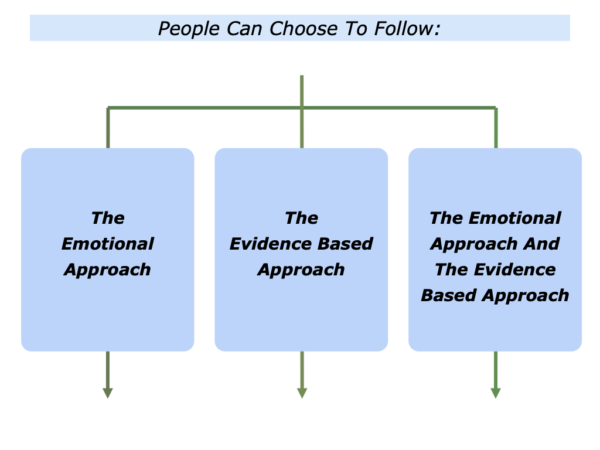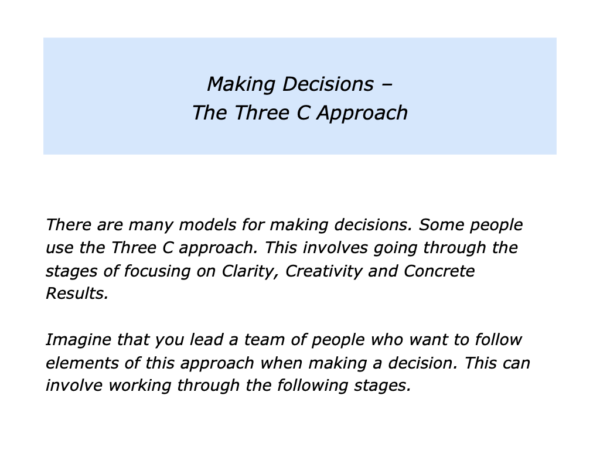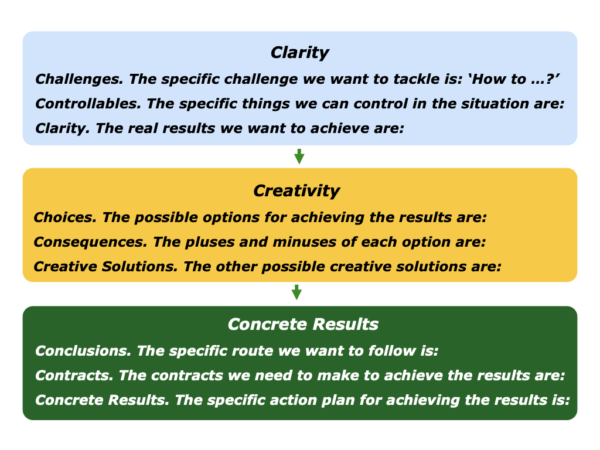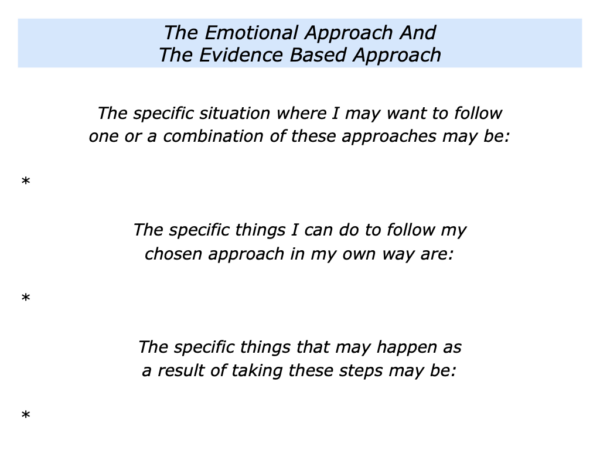
There many ways to make decisions in life. Sometimes we may follow the emotional approach, sometimes we may follow the evidence based approach. Sometimes we may combine elements of both approaches.
Different people follow these approaches in different ways. Let’s explore how they may translate these into action.
The Emotional Approach
Human beings are emotional beings. They often have strong feelings and may respond to situations in an emotional way. Sometimes this can be positive, sometimes it can have other consequences.
Some people learn how to use their feelings in a way that helps them and other people. Some let their feelings use them and behave in ways that may hurt them or other people.
People make decisions every minute and the choices they make have consequences. When making decisions, it can be useful to clarify the emotional consequences – both for themselves and other people.
Some people make decisions based on the pleasure and pain principle. They choose the path that appears most likely to help them to have more pleasure or less pain.
Sometimes they may do things that give them short-term gratification. Sometimes this works out well, sometimes in can create longer-term problems.
Some people are good at getting short-term wins and also working towards long-term success. They are also good at encouraging themselves and others on the way towards achieving success.
People may also make decisions based on their confirmation bias. They look for examples that confirm their feelings or present view of the world. They tend to see what they believe rather than believe what they see.
As mentioned earlier, different people make decisions in different ways. Let’s look at another approach.
The Evidence Based Approach
Human beings have the ability to make considered decisions. Whilst taking feelings into account, they may operate in a more cerebral way. They then make decisions by using the evidence based approach.
Let’s look at one example. A current example at the time of writing is a debate in the UK about the effectiveness of prisons. One observer described this in the following way.
“We seem to be addicted to punishing people and putting them in prison. The evidence suggests, however, that there are better ways of reducing reoffending than putting people in what can be a university for crime.
“Certainly some people need to be in prison. The question is: Do we want to implement these more effective ways of reducing reoffending or do we want to continue with the punishment approach?”
People who take the evidence based approach believe in gathering as much data as possible. They may then use something like the Three C model for making decisions.
Such people go through the following steps and, as far as possible, back up each one with evidence. Here is an overview of this approach.


The evidence based approach can help people to make considered decisions. Sometimes it is also possible to use another model.
The Emotional Approach And
The Evidence Based Approach
People sometimes combine elements of both approaches. They believe, for example, that emotion is evidence. It is vital to take this into account when also using the evidence based approach.
Let’s look at one example. Imagine that a person wants to move from feeling depressed to feeling happier. One approach they can use is to recall a time when they did this successfully. They can explore the following themes.
Looking back, when was a time that I moved from feeling depressed to feeling happier? What did I do right then? What were the principles I followed? How did I translate these into action? What happened as a result?
Looking ahead, how can I follow these principles in the future? Based on what has worked in the past, how can I follow these steps in the present? What other skills may I need to add? How can I translate these ideas into action? What else can I do to increase the chances of being happier?
As mentioned earlier, there are several ways to make decisions. Some people follow the emotional approach, some follow the evidence based approach. Some combine both approaches.
Let’s return to your own life and work. Looking ahead, can you think of a situation where you may want to follow one or more of these approaches? How can you do this in your own way?
If you wish, try tackling the exercise on this theme. This invites you to complete the following sentences.







Leave a Reply